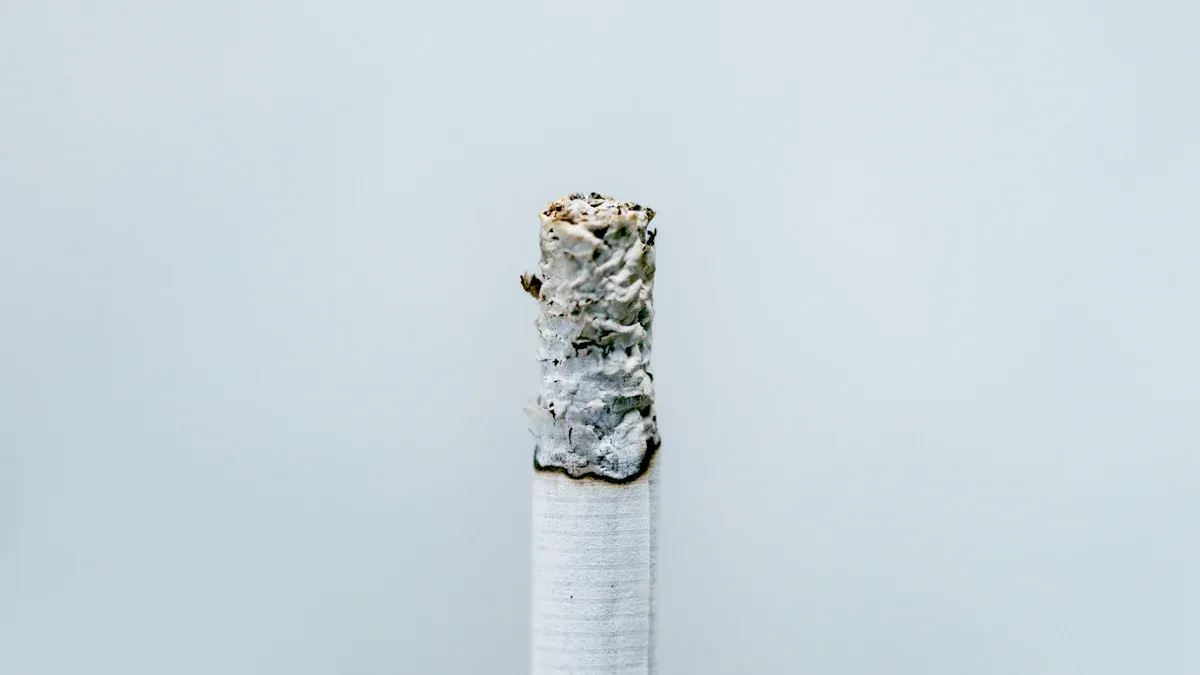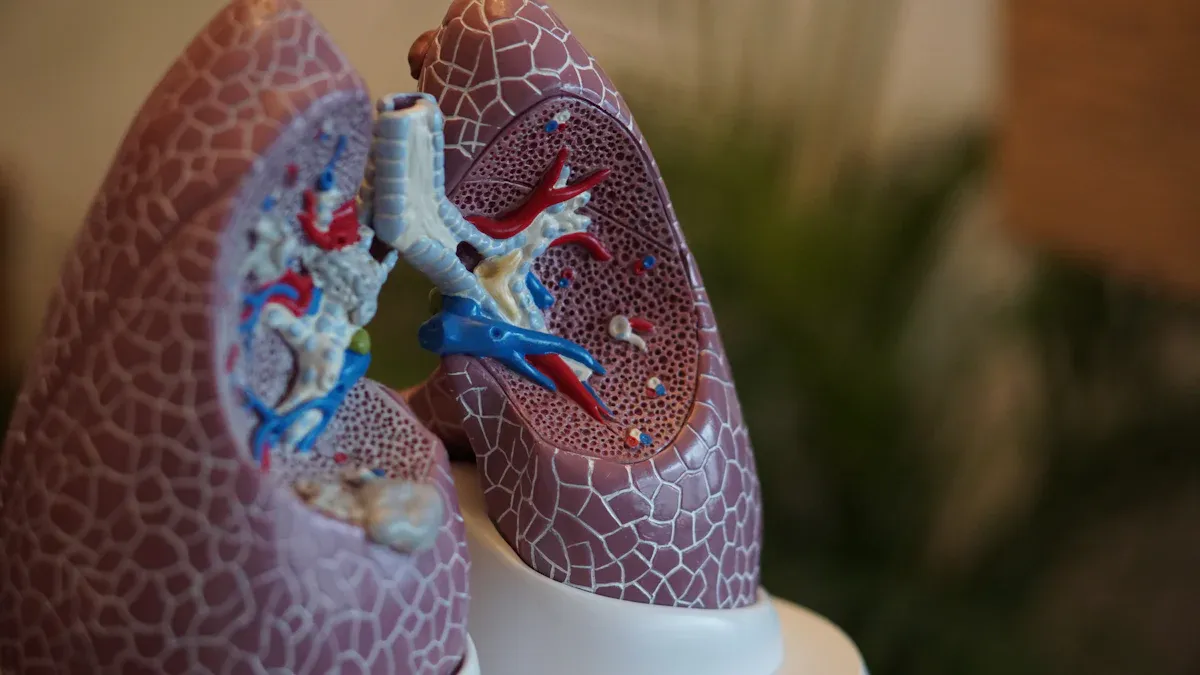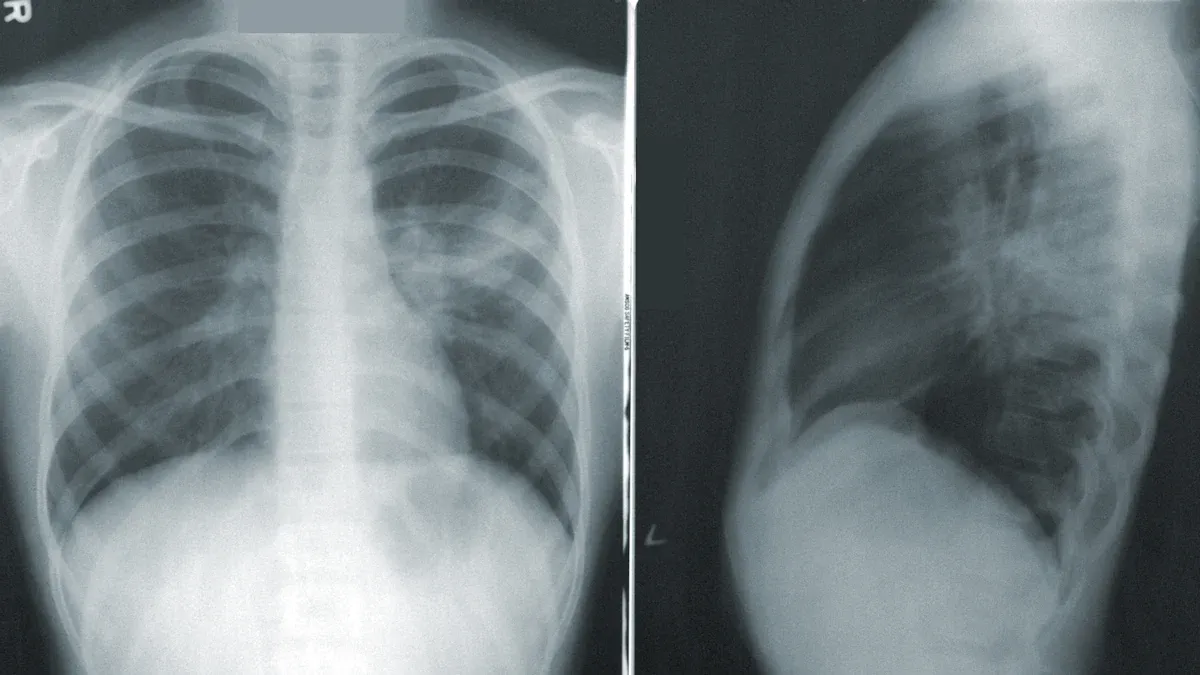Why Do Non-Smokers Develop Lung Cancer?

You might think that the question "Do Only Smokers Get Lung Cancer? The Truth About Lung Cancer Risk" has a simple answer, but that’s far from the truth. Non-smokers can also develop this disease due to factors like genetic mutations and environmental exposures. For instance, radon gas, a naturally occurring radioactive gas, is the leading cause of lung cancer in non-smokers, contributing to about 21,000 deaths annually in the U.S., with 2,900 of those being non-smokers. Secondhand smoke is another major culprit, increasing your risk by 25% if you’re regularly exposed. In fact, between 10% and 15% of lung cancer cases in the U.S. involve non-smokers, accounting for roughly 20,000 deaths each year.
Did you know? In Asian countries, lung cancer rates among non-smokers are even higher, ranging from 30% to 40%.
Understanding these risks is crucial. It’s not just about smoking; it’s about the air you breathe and the genes you inherit. So, the answer to "Do Only Smokers Get Lung Cancer?" is a resounding no.
Key Takeaways
People who don’t smoke can still get lung cancer. This can happen because of genes or things in the environment.
Radon gas is a top cause of lung cancer for non-smokers. It causes about 21,000 deaths each year in the U.S.
Breathing in secondhand smoke raises the chance of lung cancer by 25%. It’s important to stay away from smoky places.
Going to the doctor often and knowing signs like a long-lasting cough can help find lung cancer early. Early detection helps treatment work better.
Living healthy and staying away from harmful chemicals can lower your chance of getting lung cancer.
Do Only Smokers Get Lung Cancer? The Truth About Lung Cancer Risk
Prevalence of Lung Cancer in Non-Smokers
You might be surprised to learn how common lung cancer is among non-smokers. While smoking remains the leading cause, about 10% to 15% of lung cancer cases in the U.S. occur in people who have never smoked. That’s roughly 20,000 deaths every year. Globally, the numbers are even more striking. In 2022, there were 2.5 million lung cancer cases, and a significant portion of these involved non-smokers.
Non-smoking women face a higher risk than men. For instance, the age-adjusted incidence rate of lung cancer is 4.8 per 100,000 in non-smoking men but jumps to 20.8 per 100,000 in non-smoking women. Adenocarcinoma, a type of lung cancer, is particularly prevalent among non-smokers, accounting for 70% of cases in 2022.
Gender | Incidence Rate (per 100,000) |
|---|---|
Non-Smoking Men | 4.8 |
Non-Smoking Women | 20.8 |
These statistics highlight that lung cancer isn’t just a smoker’s disease. Factors like genetic mutations, radon gas exposure, and secondhand smoke play a significant role in non-smokers developing lung cancer.
Common Misconceptions About Lung Cancer and Smoking
Many people believe that lung cancer only affects smokers. This misconception can lead to delayed diagnoses in non-smokers, as symptoms might be overlooked. The truth is, about 10% to 20% of lung cancers occur in individuals who have never smoked. In fact, 20% of Americans who die from lung cancer each year have no history of smoking.
Another myth is that smoking is the sole cause of lung cancer. While it’s the leading cause, other factors like radon gas and secondhand smoke are also significant. Radon gas alone is responsible for about 21,000 lung cancer deaths annually, with 2,900 of these involving non-smokers. Secondhand smoke contributes to around 7,000 deaths each year.
Note: Dr. Villena-Vargas, a lung cancer specialist, emphasizes that non-smokers face risks from environmental and genetic factors, not just smoking.
Understanding these facts can help you recognize that lung cancer is a complex disease influenced by multiple factors. It’s not just about smoking; it’s about awareness and early detection.
Causes of Lung Cancer in Non-Smokers

Genetic Factors
Inherited Mutations
Sometimes, your genes can play a significant role in lung cancer development, even if you’ve never smoked. If someone in your family has had lung cancer, you might inherit genetic mutations that increase your risk. Studies show that a family history of lung cancer can triple your chances of developing the disease. This is especially true if close relatives, like parents or siblings, have been affected.
Spontaneous Genetic Changes
Not all genetic risks are inherited. Some mutations occur spontaneously during your lifetime. These changes can happen due to environmental exposures or simply as a result of aging. For example, mutations in the EGFR gene are common in non-smokers with lung cancer. These genetic changes can cause cells in your lungs to grow uncontrollably, leading to tumors.
Environmental Risks
Radon Gas Exposure
Radon gas is a silent threat. It’s colorless, odorless, and naturally occurs in the ground. When it seeps into homes, it can accumulate to dangerous levels. According to the BEIR VI Report, radon is the second leading cause of lung cancer in the U.S., responsible for about 15,000 deaths annually. Testing your home for radon is a simple yet effective way to reduce this risk.
Secondhand Smoke
Even if you don’t smoke, being around others who do can harm your lungs. Secondhand smoke contains over 7,000 chemicals, many of which are toxic. Regular exposure increases your lung cancer risk by 25%. This makes avoiding environments with tobacco smoke crucial for your health.
Occupational Hazards
Your workplace can also expose you to harmful substances. Jobs involving asbestos, diesel exhaust, or other carcinogens significantly raise your risk of lung cancer. For instance, asbestos exposure is a well-known cause of mesothelioma, a rare type of lung cancer. Wearing protective gear and following safety guidelines can help minimize these risks.
Lifestyle-Related Risks
Cooking Fumes and Indoor Air Pollution
If you cook often, especially with high heat or certain oils, you might be inhaling harmful fumes. Studies reveal that cooking oil fumes can damage lung tissue over time. Women exposed to these fumes are twice as likely to develop lung cancer. Using proper ventilation, like range hoods, can help reduce this risk.
Chronic Respiratory Infections
Chronic respiratory infections, such as asthma or tuberculosis, can also increase your lung cancer risk. Research shows that individuals with a history of asthma are 14 times more likely to develop lung cancer. Keeping your respiratory health in check and seeking timely treatment for infections can make a big difference.
Tip: Regular health checkups and a healthy lifestyle can help you stay ahead of these risks.
Symptoms of Lung Cancer in Non-Smokers

Recognizing the symptoms of lung cancer early can make a big difference in treatment outcomes. While some signs might seem minor at first, they can escalate over time. Let’s break down the early and advanced symptoms you should watch for.
Early Symptoms
Persistent Cough
A persistent cough is one of the most common early signs of lung cancer. If you notice a cough that doesn’t go away or worsens over time, it’s worth paying attention. This isn’t your typical cough from a cold or allergies. It may linger for weeks and could even bring up blood in the sputum. Many non-smokers dismiss this symptom, thinking it’s harmless, but it’s better to get it checked out sooner rather than later.
Shortness of Breath
Do you find yourself getting winded more easily than usual? Shortness of breath can be another early warning sign. You might notice it when climbing stairs or doing activities that never used to leave you breathless. This happens because lung cancer can block or narrow airways, making it harder for your lungs to function properly.
Tip: If you experience a persistent cough or shortness of breath, don’t ignore it. These symptoms might seem minor, but they could signal something more serious.
Advanced Symptoms
Chest Pain
Chest pain is a more advanced symptom of lung cancer. It often gets worse when you breathe deeply, cough, or laugh. The pain might feel sharp or dull and can spread to your back or shoulders. This happens because the tumor may press on nearby nerves or tissues. If you feel unexplained chest discomfort, it’s important to consult a doctor.
Unexplained Weight Loss
Losing weight without trying can be a red flag. Lung cancer can affect your metabolism, causing you to shed pounds unexpectedly. Fatigue often accompanies this symptom, leaving you feeling weak or tired. If you notice these changes in your body, don’t brush them off as stress or a busy lifestyle.
Note: Other advanced symptoms can include wheezing, difficulty swallowing, and recurrent lung infections. Staying alert to these signs can help you catch the disease early.
By understanding these symptoms, you can take proactive steps to protect your health. Early detection is key, so don’t hesitate to seek medical advice if something feels off.
Preventing Lung Cancer in Non-Smokers
Reducing Environmental Exposures
Testing for Radon Gas
Radon gas is a silent but deadly threat. It’s the leading cause of lung cancer in non-smokers, responsible for about 2,900 deaths annually. This colorless, odorless gas seeps into homes from the ground, often going unnoticed. Testing your home for radon is a simple yet powerful step you can take to protect yourself. Free or low-cost radon test kits are available in many areas, and studies show that providing these kits alongside support can significantly increase people’s readiness to take action.
Tip: If your radon levels are high, consider installing a mitigation system to reduce exposure.
Avoiding Secondhand Smoke
Secondhand smoke contains over 7,000 harmful chemicals, many of which are carcinogenic. Even brief exposure can increase your risk of lung cancer. Creating a smoke-free home and avoiding places where smoking occurs are essential steps. Research shows that implementing smoke-free policies at home can significantly lower your exposure and improve your overall lung health.
Promoting Early Detection
Regular Health Checkups
Regular checkups can be lifesaving. Many non-smokers delay seeking medical advice because they assume their symptoms are minor. Routine screenings and discussions with your doctor can help catch lung cancer early, improving your chances of successful treatment.
Recognizing Symptoms Early
Pay attention to your body. Symptoms like a persistent cough or shortness of breath might seem harmless but could indicate something more serious. Early detection is key, so don’t hesitate to consult a healthcare provider if you notice unusual changes.
Note: Early diagnosis often leads to better outcomes, as lung cancer is frequently detected at advanced stages.
Healthy Lifestyle Choices
Maintaining a Balanced Diet
Eating a diet rich in fruits and vegetables can help reduce your risk of lung cancer. Studies suggest that individuals with higher fruit and vegetable intake may have a lower risk compared to those who consume less.
Avoiding Pollutants When Possible
Limit your exposure to indoor and outdoor pollutants. Use proper ventilation when cooking, avoid areas with heavy air pollution, and consider wearing protective masks if necessary. These small changes can make a big difference in protecting your lungs.
Takeaway: By reducing environmental risks, staying proactive about your health, and making healthy lifestyle choices, you can significantly lower your chances of developing lung cancer.
Non-smokers can and do develop lung cancer, often due to factors beyond their control. Genetic mutations, environmental exposures like radon or asbestos, and even a family history of lung cancer can increase your risk.
About 15–20% of lung cancer cases occur in people who have never smoked.
Secondhand smoke raises your risk by 25%, while conditions like asthma multiply it even more.
Removing environmental risks and treating lung diseases can significantly lower your chances.
Tip: Stay proactive. Regular checkups and early detection, such as low-dose CT scans, can catch lung cancer early—even in non-smokers.
By staying informed and taking preventive steps, you can protect yourself and those you care about. If you notice symptoms, don’t wait—consult a healthcare provider right away.
FAQ
What are the main causes of lung cancer in non-smokers?
Non-smokers often develop lung cancer due to environmental factors like radon gas, secondhand smoke, or air pollution. Genetic mutations and occupational hazards, such as asbestos exposure, also play a role.
Tip: Test your home for radon and avoid secondhand smoke to reduce your risk.
Can lung cancer in non-smokers be prevented?
While you can’t control genetic factors, you can lower your risk by reducing environmental exposures. Test for radon, avoid pollutants, and maintain a healthy lifestyle. Early detection through regular checkups also helps.
Are non-smokers more likely to survive lung cancer?
Non-smokers often have a better prognosis because their lung cancer is usually linked to specific genetic mutations, which respond well to targeted therapies. However, early detection remains critical for better outcomes.
Should non-smokers get screened for lung cancer?
If you have risk factors like a family history of lung cancer or exposure to radon, talk to your doctor about screening. Low-dose CT scans can detect lung cancer early, even in non-smokers.
Is secondhand smoke really that dangerous?
Yes! Secondhand smoke contains over 7,000 harmful chemicals. Regular exposure increases your lung cancer risk by 25%. Protect yourself by avoiding smoky environments and creating a smoke-free home.
Note: Even brief exposure to secondhand smoke can harm your lungs.
See Also
Exploring Lung Adenocarcinoma: Causes And Associated Risks
Insights Into Bronchial Adenomas And Carcinoid Tumors
A Comprehensive Guide To Large-Cell Lung Carcinoma
